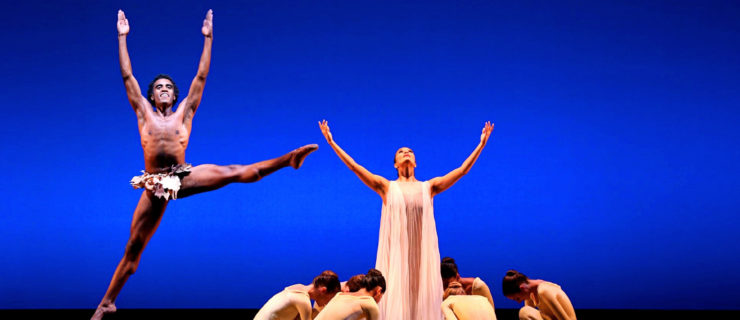How Dancers Can Beat Zoom Fatigue
Now that we’re more than nine months into the pandemic, there’s a big chance you’re feeling Zoom-ed out. Read: Totally overusing the video-conferencing app for school and dance classes—and everything else. And according to dance/movement therapist Erica Hornthal, MA, LCPC, BC-DMT, there’s good reason for that: “Managing your environment in a virtual space is taxing on the mind, and therefore taxing on the body.”
Hornthal attributes these feelings, in part, to a mind–body disconnect that happens when we use the app: Your body knows you are alone in the room, but your mind sees a group of people on screen—and managing this COVID-era reality can be, well, exhausting. But we can also feel Zoom fatigue, Hornthal says, from having to “constantly be present to the third ‘person’ in the room: the Zoom camera.” Uh, relatable!
So if staring at a grid of fuzzy faces—or into the abyss of that cold, dark lens on your device—has you feeling less than energized, here are some ways to cope.
Take breaks from tech throughout the day
Tamia Strickland, a sophomore in the Ailey/Fordham BFA dance program, trains both in person (with a mask, of course!) and online but says there are unique challenges that come with the latter. For one, she says, it’s hard “to stay focused and motivated when you are in your basement or living room staring at a computer screen all by yourself—and all day long.” These feelings can lead to frustration: You want to stay engaged with the class, but after staring at your computer screen for so long, you start to feel unmotivated.
As a remedy, Hornthal suggests taking breaks from your tech devices when you can. “The last thing you want to do,” she says, “is exit a Zoom session and then immediately jump onto your phone.” Instead, take a breather from everything virtual, and give your mind—and body—time to recalibrate. “Create space to connect or reconnect with your body when you are off technology,” Hornthal says. “Take a walk, practice mindful breathing, embrace nature.”
Move for yourself—and on your own
Another way to overcome feelings of online-class fatigue, Hornthal says, is to find time to move on your own—away from the camera on your device. As you begin moving for yourself, try to recognize and notice your own body wisdom. As a dancer, this could simply mean taking stock of what feels good and natural to your body as you, say, indulge in an improv sesh.
Tim Roberts, a Maryland dance studio owner and former performer, says giving his students time to turn their cameras off and work through their own movement has helped keep them motivated. “Opening that space for them is so necessary and beneficial, and helps them appreciate the time they do have with me,” he says.
If you’re not feeling up to a movement break, consider cooling down the mind and body by taking some time to stretch out and take up space in the body, Hornthal says. By encouraging greater body awareness, stretching can help give you more insight into what your body needs at any given point—a physical check-in before you head back into The Land of Zoom.
Tap into your other senses
When you’re on Zoom, you’re constantly using your eyes—to learn choreography, to support fellow dancers, to catch physical cues from teachers—so it’s important, Hornthal says, to give yourself screen breaks. As you give your eyes a rest, take time to whet your other senses: Squeeze a stress ball; smell the outside air; gulp a tasty green smoothie; listen to your favorite playlist. The key here is to take in stimuli that trigger your other senses, rather than continuing to use (or overuse) your sense of sight.
And as a golden rule for your overall Zoom-life health, always remember: “It isn’t just dance that is happening online—our entire lives are virtual,” Hornthal says. “That means we have to be intentional with our downtime, and turn off technology, so we can tune in to ourselves.”




